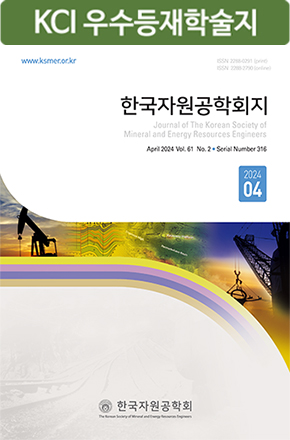Research Paper
- Armstrong, R.T. and Wildenschild, D., 2012, “Investigating the pore-scale mechanisms of microbial enhanced oil recovery,” Journal of Petroleum Science and Engineering, Vol. 94-95, pp. 155-164.
- Banat, I.M., 1995, “Biosurfactant production and possible uses in microbial enhanced oil recovery and oil pollution remediation - a review,” Bioresource Technology, Vol. 51, No. 1, pp. 1-12.
- Bass, C. and Lappin-Scott, H., 1997, “The bad guys and the good guys in petroleum microbiology,” Oilfield Review, Spring, Vol. 9, No. 1, pp. 17–25.
- Bodour, A.A. and Miller-Maier, R.M., 1998, “Application of a modified drop-collapse technique for surfactant quantitation and screening of biosurfactant-producing microorganisms,” Journal of Microbiological Methods, Vol. 32, No. 3, pp. 273-280.
- Brown, L.R., 2010, “Microbial enhanced oil recovery (MEOR),” Current Opinion in Microbiology, Vol. 13, No. 3, pp. 316-320.
- Castorena, C.G., Zapata, P.I., Roldán, C.T., Reyes, A.J., Mayol, C.M., Román, V.S. and Olguín, L.P., 2012, “Evaluation of indigenous anaerobic microorganisms from Mexican carbonate reservoirs with potential MEOR application,” Journal of Petroleum Science and Engineering, Vol. 81, pp. 86-93.
- Coates, J.D., Chisholm, J.L., Knapp, R.M., McInerney, M.J., Menzie, D.E. and Bhupathiraju, V.K., 1993, “Microbially enhanced oil recovery field pilot, Payne County, Oklahoma,” Developments in Petroleum Science, Vol. 39, pp. 197-205.
- Desai, J.D. and Banat, I.M., 1997, “Microbial production of surfactant and their commercial potential,” Microbiology and Molecular Biology Reviews, Vol. 61, No. 1, pp. 47-64.
- Ibrahim, M.L., Ijah, U.J.J., Manga, S.B., Bilbis, L.S. and Umar, S., 2013, “Production and partial characterization of biosurfactant produced by crude oil degrading bacteria,” International Biodeterioration & Biodegradation, Vol. 81, pp. 28-34.
- Kim, D.-W., Kim, M.-J. and Kang, S.-M., 1995, “Purification and Properties of Biosurfactant from Pseudomonas aeruginosa KK-7,” Journal of Microbiology and Biotechnology, Vol. 23, No. 3, pp. 337-345.
- Lee, K.S., 2010, “Comparison of Reservoir Performances for Chemical Enhanced Oil Recovery,” Journal of The Korean Society for Geosystem Engineering, Vol. 47, No. 3, pp. 291-299.
- Makkar, R.S. and Cameotra, S.S., 1999, “Biosurfactant production by microorganisms on unconventional carbon source-a review,” Journal of Surfactant and Detergents, Vol. 2, No. 2, pp. 237-241.
- Maure. A., Saldana, A.A. and Juarez, A.R., 2005, “Biotechnology applications to EOR in Talara off-shore oil fields, Northwest Peru,” SPE 94934 presented the 2005 SPE Latin American and Caribbean Petroleum Engineering Conference, Rio de Janeiro, Brazil, June 20-23.
- Mulligan, C.N., 2005, “Environmental applications for biosurfactants,” Environmental Pollution, Vol. 133, No. 2, pp. 183-198.
- Pornsunthorntawee, O., Arttaweeporn, N., Paisanjit, S., Somboonthanate, P., Abe, M., Rujiravanit, R. and Chavadej, S., 2008, “Isolation and comparison of biosurfactants produced by Bacillus subtilis PT2 and Pseudomonas aeruginosa SP4 for microbial surfactant-enhanced oil recovery,” Biochemical Engineering Journal, Vol. 42, No. 2, pp. 172-179.
- Ron, E.Z. and Rosenberg, E., 2001, “Natural roles of biosurfactants,” Environmental Microbiology, Vol. 3, No. 4, pp. 229-236.
- Sarafzadeh, P., Hezave, A.Z., Ravanbakhsh, M., Niazi, A. and Ayatollahi, S., 2013, “Enterobacter cloacae as biosurfactant producing bacterium: Differentiating its effects on interfacial tension and wettability alteration mechanisms for oil recovery during MEOR process,” Colloids and Surfaces B: Biointerfaces, Vol. 105, pp. 223-229.
- Sen, R., 2008, “Biotechnology in petroleum recovery: The microbial EOR,” Progress in Energy and Combustion Science, Vol. 34, No. 6, pp. 714-724.
- Sheppard, J.D. and Mulligan, C.N., 1987, “The production of surfactin by Bacillus subtilis grown on peat hydrolysate,” Applied Microbiology and Biotechnology, Vol. 27, No. 2, pp. 110-116.
- Singh, A., Van Hamme, J.D. and Ward, O.P., 2007, “Surfactants in microbiology and biotechnology: Part 2. Application aspects,” Biotechnology Advances, Vol. 25, No. 1, pp. 99-121.
- Soudmand-asli, A., Ayatollahi, S.S., Mohabatkar, H., Zareie, M. and Shariatpanahi, S.F., 2007, “The in situ microbial enhanced oil recovery in fractured porous media,” Journal of Petroleum Science and Engineering, Vol. 58, No. 1-2, pp. 161-172.
- Tamura, K., Dudley, J., Nei, M. and Kumar, S., 2007, “MEGA 4: Molecular evolutionary genetics analysis (MEGA) software version 4.0.,” Molecular Biology and Evolution, Vol. 24, pp. 1596-1599.
- Thompson, J.D., Higgins, D.G. and Gibson, T.J., 1994, “CLUST W: Improving the sensitivity of progressive multiple sequence alignment through sequence weighting, position-specific gap penalties and weight matrix choice,” Nucleic Acids Research, Vol. 22, No. 22, pp. 4673-4680.
- Publisher :The Korean Society of Mineral and Energy Resources Engineers
- Publisher(Ko) :한국자원공학회
- Journal Title :Journal of the Korean Society of Mineral and Energy Resources Engineers
- Journal Title(Ko) :한국자원공학회지
- Volume : 52
- No :1
- Pages :56-67
- DOI :https://doi.org/10.12972/ksmer.2015.52.1.056


 Journal of the Korean Society of Mineral and Energy Resources Engineers
Journal of the Korean Society of Mineral and Energy Resources Engineers







